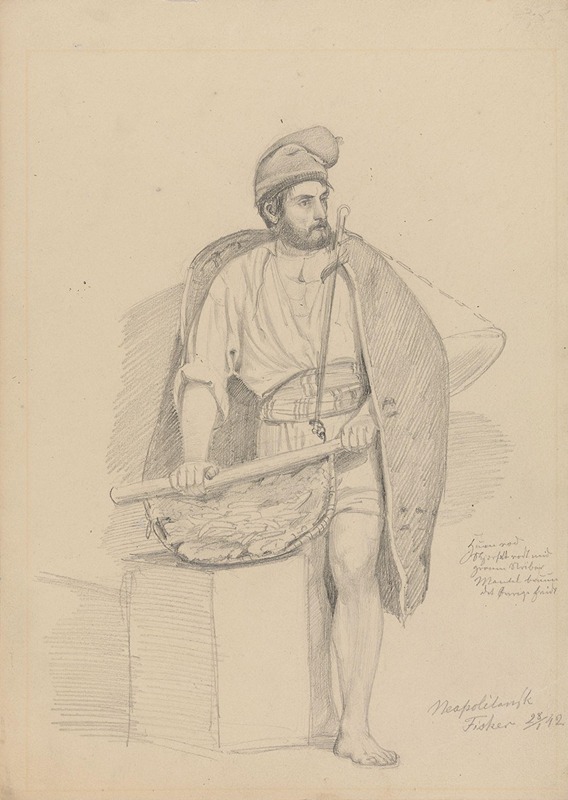
Napolitansk fisker
A hand-painted replica of Adolph Tidemand’s masterpiece Napolitansk fisker, meticulously crafted by professional artists to capture the true essence of the original. Each piece is created with museum-quality canvas and rare mineral pigments, carefully painted by experienced artists with delicate brushstrokes and rich, layered colors to perfectly recreate the texture of the original artwork. Unlike machine-printed reproductions, this hand-painted version brings the painting to life, infused with the artist’s emotions and skill in every stroke. Whether for personal collection or home decoration, it instantly elevates the artistic atmosphere of any space.
Adolph Tidemand was a prominent Norwegian painter known for his detailed and realistic depictions of Norwegian life and culture in the 19th century. One of his lesser-known works is "Napolitansk fisker," which translates to "Neapolitan Fisherman." This painting reflects Tidemand's interest in capturing the essence of everyday life, not only in his native Norway but also in other parts of Europe.
Adolph Tidemand was born on August 14, 1814, in Mandal, Norway. He studied art in Copenhagen and later at the prestigious Kunstakademie Düsseldorf in Germany, where he became associated with the Düsseldorf school of painting. This school was known for its detailed and realistic style, which Tidemand adopted and adapted to his own artistic vision. His works often focused on Norwegian folk life, traditions, and landscapes, making him one of the most significant artists in Norway during the 19th century.
"Napolitansk fisker" is an example of Tidemand's exploration of themes beyond his usual Norwegian subjects. While specific details about the painting's creation and current location are not widely documented, it is known that Tidemand traveled extensively throughout Europe. His travels included visits to Italy, where he was inspired by the local culture and scenery. This painting likely stems from his time in Italy, capturing the life of a fisherman in Naples, a city known for its vibrant maritime culture and picturesque coastal views.
The painting is characterized by Tidemand's attention to detail and his ability to convey the character and atmosphere of the scene. The fisherman, presumably the central figure of the painting, would be depicted with a sense of realism and authenticity, reflecting Tidemand's skill in portraying human subjects. The background and setting would likely include elements typical of the Neapolitan coast, such as the sea, boats, and perhaps the bustling activity of a fishing village.
Tidemand's work, including "Napolitansk fisker," is significant for its ethnographic value as well as its artistic merit. By capturing scenes from everyday life, Tidemand provided a visual record of the cultural and social conditions of his time. His paintings offer insights into the lives of ordinary people, their occupations, and their environments, making them valuable resources for understanding 19th-century European life.
While "Napolitansk fisker" may not be as widely recognized as some of Tidemand's other works, such as "Haugianerne" or "Brudeferden i Hardanger," it remains an important part of his oeuvre. It exemplifies his ability to transcend national boundaries in his art, reflecting a broader European context while maintaining his distinctive style and focus on realism.
Adolph Tidemand's legacy as an artist is marked by his dedication to depicting the human condition with empathy and precision. His works continue to be celebrated for their historical significance and artistic excellence, securing his place as a key figure in the history of Norwegian art.


















